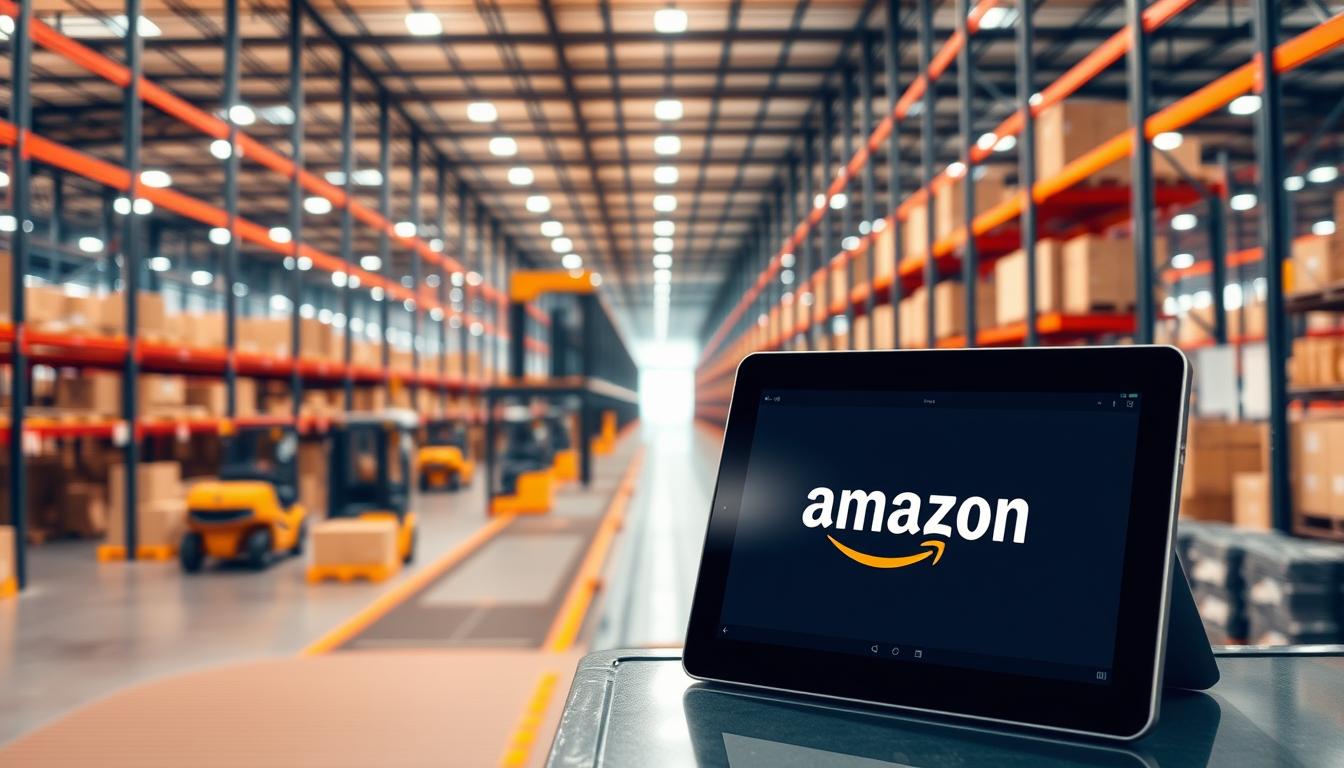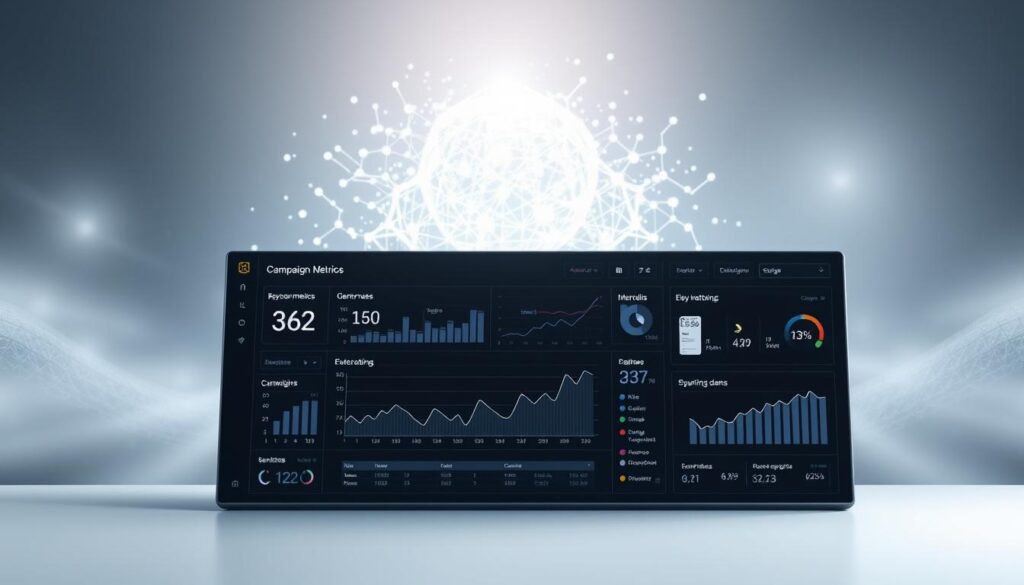Discover What is Amazon DSP and How it Works

This introduction explains a modern demand-side platform that centralizes programmatic advertising so advertisers can plan campaigns, buy inventory, and serve ads across channels in real time.
The solution combines first-party browsing, shopping, and streaming signals with AI automation to reach audiences both on owned properties and across the wider web.
It helps brands drive brand awareness and sales by activating deterministic and modeled signals from shopping and streaming behavior.
The platform supports display, online video, streaming TV, audio, and even store placements, and it measures performance with metrics like detail page view rate and new-to-brand.
Privacy-forward design—including clean rooms and transparent reporting—enables addressability without relying on traditional identifiers. Service models range from self-service to managed-service with specific budget options.
This guide serves as a practical buyer’s guide to choosing inventory, options, and strategies that help advertisers reach the right audiences and optimize campaign performance over time.
Buyer’s Guide overview: who this Amazon DSP guide is for
This buyer’s guide helps teams decide when to add programmatic buying to their media mix. It targets advertisers, agencies, and brands of every size who need clear direction on campaign design and budget trade-offs.
Marketers selling products on a marketplace and those who do not will find practical guidance. The guide explains self-service controls and the managed-service route, including typical spend thresholds and support levels.
Readers focused on awareness, consideration, or direct response can map objectives to audiences, inventory, and creative formats. It also covers how to align budget and spend with expected outcomes so teams can justify investment and scale responsibly.
New programmatic teams will get a plain-language explanation of auction flow and device delivery. Experienced practitioners get tips on reporting, frequency controls, and optimization that refine the next campaign.
What is a demand-side platform and where Amazon DSP fits
Advertisers now use automated platforms to centralize targeting, bidding, and reporting across channels. A demand-side platform (DSP) acts as the buy-side system that lets buyers bid on inventory in real time and manage ads from one place.
How automated buying works across exchanges and SSPs
In programmatic flow, a publisher’s ad server signals available inventory through an SSP. Exchanges route that opportunity to multiple bidders.
The dsp evaluates user and context signals, runs decision logic, and places a bid in milliseconds. This rapid loop lets advertisers apply targeting strategies and pacing rules so campaigns meet goals.
Buyers versus sellers: DSP and SSP roles
DSPs represent buyers and focus on audience selection, bid logic, budget pacing, and reporting. SSPs represent publishers and optimize yield for each impression.
“Matching supply and demand efficiently requires tight integrations, low-latency bidders, and clear reporting.”
- Core components: bidder, ad server, budget manager, creative manager, reporting, fraud prevention.
- Integrations with exchanges expand inventory access and influence time-to-serve and performance.
- Analytics help advertisers compare placements and optimize bids and budgets over time.
Within this ecosystem, amazon dsp stands out by combining first-party shopping and streaming signals with deep access to owned inventory, letting teams target audiences tied to products and purchases across the funnel.
what is amazon dsp
A unified programmatic system uses product, browsing, and viewing signals plus AI to tailor ads across owned and third‑party placements. It acts as a central tool for planning, buying, and measuring programmatic campaigns across Amazon O&O and premium external inventory.
Amazon’s first‑party signals, AI automation, and privacy‑centric approach
First‑party shopping, browsing, and streaming signals power audience building and allow precise targeting tied to purchase intent. AWS‑backed AI automates bid pacing, creative selection, and scale without relying on legacy identifiers.
Privacy features such as clean rooms enable aggregate insights and audience analytics while keeping customer data protected. Transparent reporting gives advertisers usable insights to refine targeting and improve performance over time.
Availability for advertisers on and off platform
The platform serves endemic advertisers who drive traffic to product pages and non‑endemic advertiser brands that direct users to their own web properties. It supports display, online video, streaming TV, audio, and even store placements.
- Interoperability with Amazon Marketing Cloud and measurement tools improves planning and analysis.
- Open‑web reach via Amazon Publisher Services and major exchanges expands inventory beyond retail pages.
Advertisers and agencies can choose self‑service or managed support and integrate amazon marketing measurement into their wider tech stack to align campaigns with business goals.
How Amazon DSP works: the programmatic lifecycle, from bid to impression
An impression request starts a millisecond auction that links signals, bids, and creative delivery. When a page or app loads, the supply side announces available inventory and the bidder evaluates options fast.
Real-time bidding flow: request, evaluation, bid, win, serve
First, the request arrives with context about placement, device, and page. Next, the bidder runs rules that weigh contextual cues and audience data. Then the system submits a bid in real time.
If the bid wins, the ad server serves the creative and logs delivery. This loop runs so quickly that each decision must balance price, viewability, and campaign goals.
Core DSP components: bidder, ad server, budget manager, reporting
The bidder handles RTB decisions. The ad server manages creative delivery and tracks metrics like view rate and detail-page actions.
The budget manager paces spend, enforces caps, and steers toward impression targets. Reporting streams surface delivery rates and placement detail so teams can iterate mid-flight.
Addressability without third-party cookies: Ad Relevance and clean rooms
Ad Relevance uses AI to match ads to audiences across formats, including display and video, without relying on legacy identifiers.
Clean rooms permit privacy-safe analysis of purchase paths and product interest. Teams can activate modeled audiences back into campaigns while protecting customer data.
“Each bid informs the next: continuous optimization protects performance and improves product discovery.”
Amazon DSP inventory and supply quality
Access to premium placements across streaming and web properties drives stronger campaign ROI.
Owned and operated surfaces include Prime Video, Freevee, Twitch, Amazon.com, Fire TV, Alexa, and Kindle. Each surface supports both video and display goals. Fire TV and Prime Video excel for connected TV reach. Twitch and Freevee boost live and ad-supported video engagement.
Extended web and publisher reach
Amazon Publisher Services connects direct publishers and header‑bidding partners to increase premium inventory. Leading exchanges complement this supply to scale across devices and platforms while maintaining quality.
Protection and verification
Brand safety, fraud detection, and viewability standards are built in. Advertisers can use third‑party verification and lift studies to validate media quality and offline impact.
- Align inventory type with product and creative: CTV for long‑form video; Amazon.com and Kindle for product context.
- Diversify delivery to test site type, format, and audience performance.
- Use reporting to compare supply lanes and reinvest in top performers.
| Supply Source | Best Formats | Audience Strength |
|---|---|---|
| Prime Video / Freevee | Video, CTV | High streaming intent |
| Twitch | Live video, display | Engaged, younger viewers |
| Amazon.com / Kindle | Display, product integrations | High purchase intent |
| Third‑party via exchanges | Display, video, mobile | Broad scale, varied contexts |
“Quality supply plus verification lets brands scale with confidence.”
Audience and targeting capabilities across the funnel
Audience targeting combines purchase history, browsing patterns, and streaming behavior to shape high-value segments for campaign activation. This lets teams align reach and message to each stage of the buyer journey.
First‑party signals and Amazon Audiences
Amazon Audiences are built from shopping, browsing, and streaming signals to deliver high-intent reach. These segments help advertisers find users showing product interest or viewing related content.
Advertiser and modeled audiences
Advertisers can upload remarketing pools and create modeled segments from product relevance and past engagement. Remarketing pools capture recent visitors while modeled segments expand reach using similar behaviors.
Third‑party audiences for prospecting
Third‑party audiences broaden prospecting and fill gaps where first‑party scale is limited. They complement owned signals for awareness and upper-funnel testing.
- Top‑of‑funnel: in‑market and lifestyle segments drive awareness and reach.
- Mid‑funnel: competitor conquesting and complementary audiences build consideration.
- Bottom‑funnel: retargeting and cross‑sell focus on conversions and purchases.
Brands should sequence audiences to move users from awareness to purchases, balancing scale with precision. Use shorter recency windows and tighter frequency caps for retargeting, and wider windows for prospecting to avoid fatigue.
Test multiple audience strategies in parallel and reallocate spend to segments that deliver better product engagement. Align creative and placement choices to each audience and use reporting to refine who delivers incremental value.
Creative types and formats to drive brand awareness and performance
High-impact creative formats help advertisers reach customers across screens and listening environments. Use format choice to match an objective: awareness, consideration, or direct response. Keep messaging clear and device-appropriate.
Streaming TV and online video: reach, engagement, and best practices
Streaming TV (STV) supplies large-screen reach on Prime Video, Freevee, Fire TV, and third‑party apps. These spots are non-clickable and excel at building brand awareness and priming customers.
Online video (OLV) runs across web and apps and supports clicks to product pages or an advertiser site. For higher detail page view rate, keep OLV near 24–29 seconds, introduce the brand early, and preserve clear audio cues.
Display and e‑commerce creatives: product detail integrations and templates
Display formats include standard IAB creative sizes and e‑commerce templates that assemble imagery and pricing from product detail pages. Templates speed setup and keep product information accurate.
Display works well for retargeting and cross-sell, while rich display units can support consideration with quick product detail highlights.
Audio ads and interactive options with Alexa
Audio ads on Amazon Music reach listeners in hands-free moments. Brands can prompt voice responses through Alexa for frictionless actions, like requesting a product link or saving an item to a list.
Best practices
- Align CTAs with audience intent and device context.
- Iterate headlines, imagery, and lengths to lift rate metrics and downstream behavior.
- Verify platform specs so creatives serve properly across formats and placements.
“Match format to objective: CTV for reach, OLV for clicks, display for retargeting, and audio for companion reach.”
Planning campaigns: channels, reach, frequency, and budget allocation
A practical plan compares channel reach and frequency trade‑offs and builds contingencies for changing inventory.
Cross‑channel comparisons
Planners can model linear TV, Streaming TV, audio, and display side by side to forecast reach and optimize budget allocation in near real time. The cross‑channel planner simulates how each channel contributes to reach and incremental audiences.
Frequency and overlap control
Frequency caps and shared exclusions prevent overexposure across mixed formats. Consistent audience definitions and de‑duplication rules keep delivery efficient and reduce wasted impressions.
Scenario planning with live signals
Live inventory feeds let teams build delivery curves and test alternate spend mixes. They can shift budget mid‑flight toward channels driving sales or product engagement.
- Pacing: set daily caps and seasonal ramps by funnel stage.
- Validation: read reporting, then refine reach and frequency assumptions.
- Contingency options: pre‑approve alternate deals, formats, or audiences.
“Layering STV with display and audio often expands advertisers reach while delivery diagnostics confirm incremental performance.”
Interoperability with amazon marketing tools helps de‑duplicate estimates and align channel mix to outcomes, so advertisers can plan faster and adapt in time.
Buying options and deal types in Amazon DSP
Deal types range from open auctions that scale quickly to fixed-price guarantees that lock delivery. Choosing the right path affects control, cost predictability, and risk for campaigns.
RTB, PMP, private auction, programmatic guaranteed
RTB (open auction) offers breadth and scale across the web via exchanges. It suits prospecting and flexible pacing.
PMP and private auction give curated premium supply and more control over placements. These options help brands that need brand safety and better viewability.
Programmatic guaranteed secures fixed price and prioritized delivery. Use it when timeline certainty and inventory reservation matter most.
Inventory Hub and publisher integrations
Inventory Hub centralizes discovery and deal management across Amazon O&O and third-party inventory. It speeds deal setup and reporting.
- Amazon publisher integrations add direct premium placements.
- Exchanges expand reach and fill scale gaps.
Recommendation: build a mix of guaranteed and biddable deals to balance scale, brand safety, and efficiency. Track deal performance in platform reports and plan spend thresholds ahead of time.
“Diversified deal portfolios reduce delivery risk and let teams optimize toward high-value inventory.”
Measuring campaign performance and omnichannel impact
Campaign measurement combines event counts, lift studies, and modeled attribution to show impact. Teams need a compact plan that links short‑term delivery to long‑term sales and brand signals.

Core indicators to track
Define the baseline: detail page view rate (DPVR) measures product engagement. Add‑to‑list (ATL) and new‑to‑brand (NTB) show conversion intent and audience expansion.
Delivery metrics include reach, frequency, and viewability. These metrics let teams balance scale with quality across video and display.
Lift, attribution, and modeling
Brand lift studies quantify awareness and consideration. Offline sales lift ties exposure to real retail outcomes. OCM and MMM reveal omnichannel influence and guide budget shifts over time.
Audience analysis with Amazon Marketing Cloud
Event‑level queries in Amazon Marketing Cloud supply audience sequencing and path analysis. Cohort and NTB breakdowns isolate incremental sales after major video flights and show which placements drove product detail visits.
Practical measurement recommendations
- Set clear objectives and rate benchmarks before launch.
- Use third‑party verification to validate viewability and quality.
- Run rolling measurement cycles so findings feed creative and planning.
“Measure early, iterate fast, and tie metrics to decisions that improve both short‑term conversions and long‑term growth.”
Costs, service models, and budgeting considerations
Deciding between self-directed campaigns and managed support starts with expected spend and desired control.
Self‑service versus managed support
Self‑service gives maximum control and no management fee. Advertisers set targeting, pacing, and creative themselves.
Managed service provides consultative support and campaign setup. Typical minimums run near $50,000 (may vary by region). That model suits teams that want strategic help and reserved inventory.
How format, placement, and pacing shape budgets
Format CPMs differ: video and CTV often cost more than display or audio. Placement premiums and programmatic guaranteed deals can raise upfront commitments.
RTB offers flexible spend and faster scaling. Programmatic guaranteed may require commitments that reduce budget agility.
- Plan warm‑up spend for learning and frequency calibration.
- Allocate by funnel: awareness-heavy video plus efficient display retargeting.
- Build a contingency pool for testing new placements or product audiences.
“Align budget reviews with reporting cycles to enable continuous optimization.”
Recommendation: Contact amazon sales or your account team for managed options, regional availability, or tailored packages.
Who should use Amazon DSP: use cases for brands and agencies
Brands launching new products gain value from broad reach plus targeted signals that speed early awareness and consideration. Amazon DSP helps move customers from discovery to product pages, letting teams test messaging across video and display.
Agencies use the platform to unify cross-format plans and present measurable outcomes. They can sequence video storytelling on large screens, then use display and remarketing to push conversions and lift downstream metrics.
Non-endemic advertisers — for example, travel or insurance — can reach high-value audiences and drive traffic to owned web properties while still tapping Prime Video and Twitch for upper-funnel impact.
- Combine channels: pair programmatic reach with Sponsored Ads to expand new-to-brand sales and improve Sponsored Products performance.
- Audience strategy: use lifestyle and in-market segments for awareness; retargeting for conversion.
- Portfolio segmentation: complex catalogs benefit from tailored creative per category and segmented audiences.
“Measurement should verify reach expansion and incremental contribution, not just raw clicks.”
Recommendation: plan measurement up front so advertisers can prove sales lift and refine future funnels.
Amazon DSP vs Sponsored Ads and other platforms
Comparing platform strengths helps planners route budgets to inventory that matches each funnel stage.
Sponsored Products, Sponsored Brands, and Sponsored Display focus on shopper intent on retail pages. They capture high-intent clicks that often lead directly to product detail visits and purchases.
Programmatic buys on an enterprise DSP extend that reach. Video and display campaigns build awareness off site, then retail ads convert users who already show interest.
Complementary roles with Sponsored Products, Brands, and Display
Use Sponsored Ads to close demand at point of purchase. Use a DSP to create demand earlier with wide-reach video and display placements.
Studies show combining both can improve conversion rate and ROAS. The DSP pushes viewers toward product pages where Sponsored Ads then capture conversions.
Comparisons with Google DV360 and The Trade Desk
DV360 brings YouTube inventory and deep Google data integrations. The Trade Desk prioritizes open-web scale and flexible exchange connections.
The DSP offers exclusive O&O placements and first-party shopping signals that the others do not. That makes it valuable for product-led campaigns and NTB measurement.
| Platform | Key Strength | Best Use |
|---|---|---|
| Sponsored Ads | Retail-site intent | Direct conversions, product detail capture |
| DV360 | YouTube + Google stack | Large-scale video reach and search-aligned targeting |
| The Trade Desk | Open-web breadth | Cross-exchange scale and advanced bidding |
| Amazon DSP | O&O inventory + shopping signals | Full-funnel video/display with product-level measurement |
“Measurement should align to the same outcomes so teams can compare rate and sales consistently.”
- Match objective to platform: awareness on video-enabled platforms; conversions on retail search and product pages.
- Use shared audience definitions and frequency caps to reduce overlap across platforms.
- Evaluate NTB, view-through, and product detail engagement in a single attribution framework or via clean-room analysis.
Recommendation: many brands run platforms in parallel. Use consistent metrics and coordinated exclusions to improve purchases and avoid wasted reach.
Best practices to improve campaign performance
Start by building parallel audience lanes that include Amazon Audiences, remarketing pools, and modeled segments. Run these in tandem to see which segments lift detail page visits and conversions.
Audience refinement, creative iteration, and deal diversification
Refine audiences by measuring incremental impact, then shift budget toward high-value segments. Keep recency and frequency caps tight for retargeting to avoid ad fatigue.
Iterate creative across video and display: test openings, lengths, and CTAs. Use product-rich display templates to boost engagement and improve metrics like DPVR and click rate.
Mix deal types to stabilize delivery. Use programmatic guaranteed for must-have placements and biddable inventory for efficient scale. This balance protects reach while allowing optimization.
Always‑on measurement with iterative optimization
Implement always-on measurement using core metrics and AMC queries to trace paths and sequence effects. Use insights to reallocate spend to stronger placements, audiences, and creative variants.
- Standardize experiments with clear hypotheses, holdouts, and success metrics.
- Document a learning agenda per campaign that lists metrics and diagnostic checks.
- Align stakeholders on platforms, inventory priorities, and review cadence so iteration compounds over time.
“Small, frequent tests and a documented learning agenda speed improvements in both reach and downstream conversion.”
Next steps to activate Amazon DSP today
,Start activation by choosing a launch path that fits team skills and timing. Set up self‑service access to begin using amazon dsp immediately or explore managed service for strategic support and onboarding.
Confirm regional availability, align goals, and match budget and spend expectations to format mix and timelines. Define objectives, select audiences, choose inventory and options, and map KPIs for measurement.
Run a small first flight: one STV awareness line, one OLV prospecting line, and one display remarketing line with clear frequency and pacing. Non‑endemic advertisers can still drive traffic to owned web destinations while accessing O&O inventory for product and customer reach.
Set a weekly optimization cadence from day one and factor account setup, creative approvals, and deal negotiations into launch time. Document learnings after 2–4 weeks and scale winning components in the next cycle, or contact amazon for help with onboarding and advanced planning.



